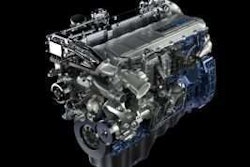Having old parts in your inventory wastes valuable space and costs you money.
By Denise L. Rondini, Executive Editor
Parts that sit on your shelf month after month not only aren’t making you any money they actually are costing you money by preventing you from carrying items that you actually can sell.
There is an art to managing a truck parts inventory to make sure you have the right parts in the right quantities on the shelf when your customers need them. The pace of product development and changes has further complicated an already complex process.
The fact that fleets are laser focused on keeping their trucks on the road is putting even more pressure on parts managers to have parts readily available. However, no dealer can stock every part that might be needed, so they have to use a combination of in-stock parts and emergency parts ordering to meet customer needs.
No matter how diligent a dealer is, it is likely there always is going to be some obsolete inventory. The goal should be to identify it as quickly as possible, take swift decisive action to get it off the shelf and then analyze how that part ended up becoming obsolete.
There is no standard definition of an obsolete part. Some dealers say a part is obsolete if it has not sold in a year, others use a smaller window. Whichever way you measure it, to control obsolete parts you need to review inventory reports on a regular basis. Your dealer management system should allow you to review the aging of your inventory.
Start monitoring a part’s progress 30 days after it is first on the shelf. A part that has not sold, or is selling slowly in the first 30 days, should be watched closely.
In addition, you need to review the factors that often lead to obsolete parts. Perhaps the No. 1 culprit is special parts orders. Your best customer comes to you seeking a part you don’t have so you order it for him. When you call him to tell him it has arrived he informs you he purchased the part someplace else. What do you do with that part? If you are like a lot of dealers, you simply will put the part on the shelf assuming that if your customer needed it once, he likely will need it again.
What you should do is return it immediately to the supplier even if you have to pay a restocking fee because chances are your customer will not need that part again for a long time or may never need it again.
You also may want to consider having customers pre-pay for special order parts or at the very least put a deposit down for all special orders.
Another cause of obsolete part is parts that are ordered for a repair. If the customer fails to bring the vehicle back for the repair, the part does not get sold. The part is put into inventory where it may sit forever when it should have been returned immediately. One way to help ensure your customer returns for the repair is to schedule a repair appointment at the time the part is ordered.
Once you realize that a part is no longer selling, look into the manufacturer’s return allowance and take advantage of any programs they offer that allow you to return parts — even if there is a fee involved.
Remember the cost of an obsolete part includes not just the purchase price of the part itself, but also the lost opportunity costs, storage costs and insurance costs associated with it.
If you are no longer able to return a part to the manufacturer, you may be tempted to just let it sit on the shelf. But it is probably better to try to sell it at a deeply discounted price or to scrap it. The goal here is to get it out of your inventory to make room for parts you actually can sell.
While there is no way to totally eliminate parts obsolescence, managing the way parts are stocked, the depth of the stock and parts returns is very important. It is better to have made one too many emergency parts orders than one too few.
By cleaning up obsolete parts a dealer can run his parts operation more efficiently, increase inventory turns and have the parts customers need on the shelf.






